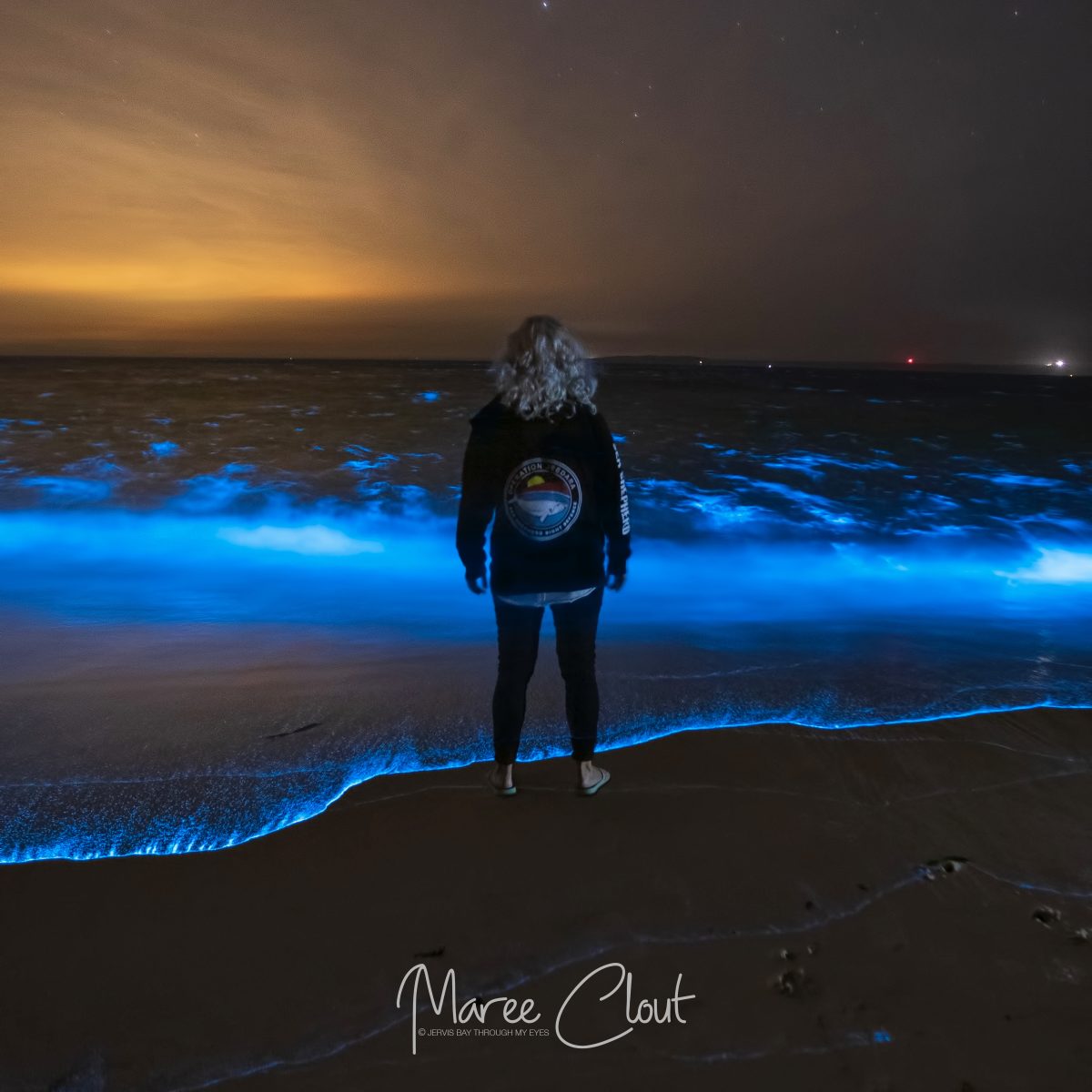
Mysterious glowing waves are a biological phenomenon, confirms marine ecologist, Dr Pia Winberg. Photos: Maree Clout Jervis Bay Photography.
While the new spring glow in the waters of Jervis Bay may look like a sign of alien activity, there is a more reasonable explanation.
Local marine ecologist Dr Pia Winberg wants to assure readers the mysterious glowing waves of Jervis Bay have a scientific explanation.
“Nature is more amazing than sci-fi, I’ll tell you that much,” Dr Winberg said.
The illuminated waves indicate the presence of bioluminescent organisms in the water.
“Bioluminescence is a biological phenomenon that exists in many different types of organisms and for many different reasons,” Dr Winberg said.
“In the case of the bioluminescence that we’ve been seeing in the oceans it comes from a type of algae called dinoflagellates.”
Dr Winberg said dinoflagellates illuminated under certain conditions.
“There needs to be nutrients dwelling on the surface of the water in the sunlight, which tends to happen around spring when the water is heating up and the bottom currents come up to the surface.”
Dr Winberg said this species was different to other types of algae.
“These algae are not photosynthesising and are not green. It’s a funny thing, they are actually a little bit up the food chain, eating other small microalgae,” she said.
“In the daylight, the algae looks a pinky-red and if there is lots of the algae, it can actually look like a red tide, but at nighttime, they actually bioluminesce on the surface of the water.
“Basically, ocean turbulence in spring can trigger the algae.”
Local photographer Maree Clout said bioluminescent activity could be unpredictable.
“If the winds and the tides looked right, I’d go look for it and 90 per cent of the time we wouldn’t find it.
“But on the times that we did find it it was definitely something magical.”

Local photographer, Maree Clout said the bioluminescence could be captured by anyone.
Ms Clout has been photographing bioluminescence in the Jervis Bay area for more than 10 years.
“I think it was my dad that made me aware of the bioluminescence,” Ms Clout said.
“He was a professional fisherman in the Jervis Bay area and he used to talk about it when I was little. He’d say, ‘The water was blue at nighttime’.
“One day, when I was just walking with my first daughter, Miranda, and she was splashing in the water, we saw the blue glow.
“A friend of mine photographed bioluminescence and we both started going out at night to photograph it together.”
Ms Clout said the bioluminescence could be captured on a smartphone if the bioluminescence was bright enough.
“If it’s a really good bloom of bio, you can pick it up on an iPhone quite easily, but the best bet is a slow exposure on a digital SLR,” Ms Clout said.
“You don’t need to edit the photos because it picks up so blue during a slow exposure. Sometimes I use a bit of contrast, but that’s it.
“I’ve noticed that some people try photographing it and try to saturate it afterwards and it actually blows out the blue and looks white, so it doesn’t really work to edit the bioluminescence.”

Local photographer Maree Clout said she did not need photo editing software when she captured bioluminescence through slow exposure.
Ms Clout said if people wanted to visit Jervis Bay for the bioluminescence, the Bioluminescence Australia Facebook group posted nearby sightings.
“Our main beach that we seem to find it is Barfleur Beach, near Plantation Point, because the northeast winds come in on that beach,” Ms Clout said.
To see more of Maree’s work, check out her Facebook and Instagram pages.







